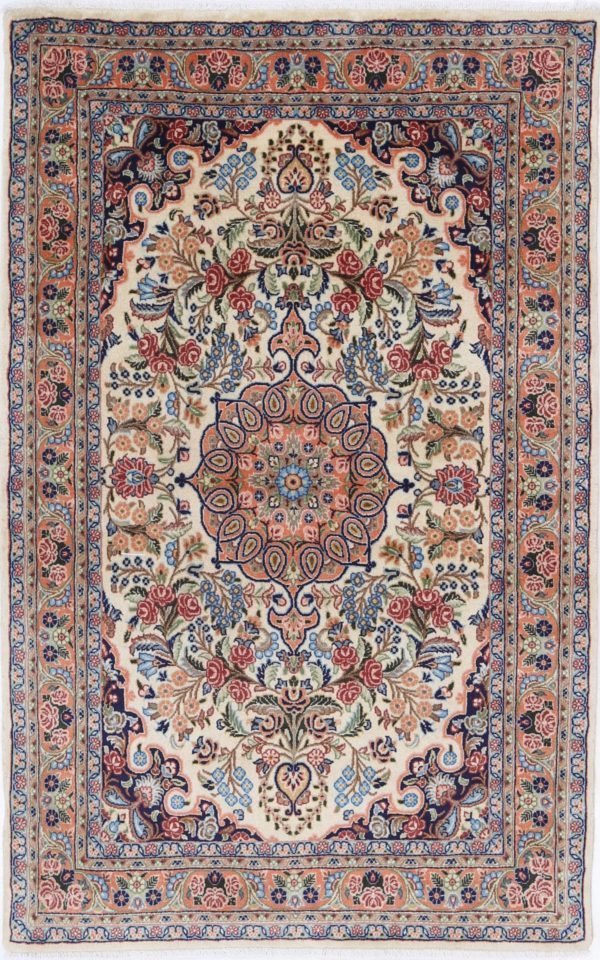Bijar
Bijar Rugs
“The Iron Rug” of Persia
Made in the Kurdish area of northwest Iran, Bijar rugs are known for their unique style of construction and their distinctive weight, which makes them quite different from the typical image we have of Persian rugs.
Over the centuries, the city of Bijar has been home to many different tribes, from the Azerbaijanis and Turks to the Kurds.
The influence of each of these tribes resulted in a diverse weaving culture, which is represented in the distinctive styles of Bijar rugs.
Origin of Bijar Rugs
The city of Bidjar is located in the province of Kurdistan in the heart of Northwest Iran. Bijar rugs are produced in the many villages in the surrounding vicinity. The region covered by the name Bijar is quite large and includes most of the fine and course double-wefted rugs of Kurdistan.
Bijar production is carried out on a semi-organized village manufacturing basis. Kurdish tribes have traditionally been the region’s endemic people. However, the Afshari tribe also produced many Bidjar’s workshop rugs. Some Bijar tribal names are Gerus, Helvai, Afshar. With this wide range of tribes there is a huge wealth of different designs.
Table of Contents
What’s Unique About The Construction of Bijar Rugs
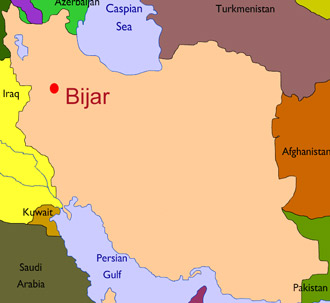
The most predominant features of these rugs are their construction technique and their inherent toughness, which has earned them the nickname ‘Iron Rug’ of Iran.
A dense, hard-working backing material against which the rugs are woven contributes to the toughness of these rugs. In addition, the knots made by the weavers are thrashed or beaten during the process. This beating and weaving motions creates a compact, heavy fabric with puffed up wool, toughening up the rug even more.
The symmetrical Turkish knot is mainly used in Bijar rugs, although in some rugs you can also see the asymmetrical Persian knot.
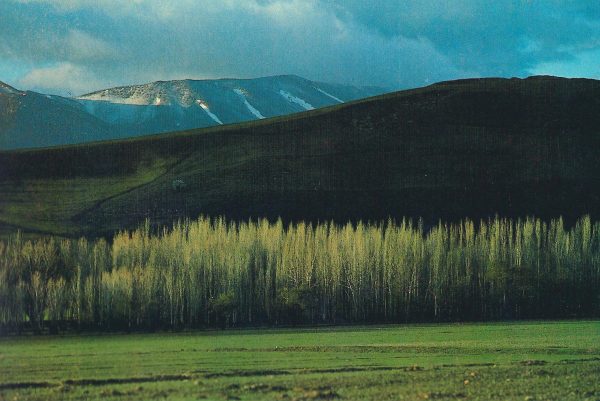
The weft of these rugs is also unusual. The wool weft is made by wetting the material and then pulling and separating the individual strands so that parts of the single weft could be at right 90 degree angles to each other.
This process coarsens the wool and gives it a unique characteristic, different from any other type of Oriental rug.
When you look at the older Bijar rugs, it may seem like the rugs have 3 wefts instead of the usual two.
This is in fact an optical illusion caused by the angle of the wool. In the more modern versions, the weft tends to focus on holding the strands in place, resulting in a rug that is finer than the traditional coarser versions.
Antique Bijar Rugs
Antique Bijar Rugs come from the town of Bijar, located in the north-western region of Persia. Bijar and its surrounding towns were populated mainly by Kurds. Despite their small population, Bijar soon became a major weaving center.
Weavers in this region use a unique type of weaving process that results in dense, stiff, and compact rugs that are very heavy in relation to their size. This contributes to their extreme denseness and durability.
These rugs are known to stay looking good for generations. Their rich colors, beautiful floral designs, and durability are some of the many reasons why antique Bijar rugs are in such high demand all over the world.
Some of the most spectacular of these antique rugs from this region were made on order for Persian nobility and Westerners.
Characteristics of Bijar Rugs
Bijar rugs are known for what are called “Iron Rugs.”
They are dense and thick piles, heavy relation to their size, and very durable. They encompass a broad range of styles and patterns that makes them difficult to define or distinguish from other regions such as Isfahan, Kashan, Qum and Arak.
They are distinguished by primarily by their weave which is double weft construction with rows that are beaten down during the weaving process producing a dense compact fabric; making them the densest and most durable of all oriental rugs.
The Quality of their wool is lustrous and soft. Another characteristic feature is over-braiding of the kilim section of the rug between end of the rug and the fringe as well as braided fringes.
Colors and Designs
The color palate for Bijars is rich and jewel-toned. Kurds weavers have a great sense of colors and an instinctive ability to use strong colors without creating disharmony.
Rust, Red, Beige, Dark Navy are some colors used with highlights of light green, rose, light blue, yellow, black being used to make beautiful contrast.
Floral and classical geometric designs as well as large medallion designs can be seen in Bijars. Influences from Persia, Russia, and the Caucasus can be seen in Bidjar’s diverse rugs.
The rose pattern in Bijar is an influence from french carpet on easter rugs.
Use of Bouquet Roses dates back to start European inspired revival Persian rug weaving 19th century.
Broad ribbon-contour medallion, thin Herati border, and strikingly effective Open field Medallion design set these rugs apart.

The shift in the color and pattern preferences from the older rugs to the rugs woven more recently is very interesting.
Traditional Bijar weavers decorated their rugs with curvilinear and geometric motifs in limited colors, favoring assorted shades of reds, browns, blues, yellows and whites.
The shapes and colors were considered to be more attractive to men, and these rugs earned a reputation as a ‘man’s rug’.
The newer styles however feature a more feminine palette of colors and designs such as roses in pink.
How to Know if it’s A Bijar Rug
Although Bijar rugs feature a fairly wide range of colors, the tribal weavers typically stayed true to a few colors, mainly red, blue, yellow, brown and white. The designs are mostly geometric or curved and interspersed with curvilinear features.
Many Bijar rugs feature two designs that are very rarely seen in other rugs. These are the Garrus and Guli Farang designs.
The Garrus design features a field that is created of cobalt or midnight blue color. Scattered all over the field are large blossoming vinery and split-arabesques patterns. The main border is made up of repeated serpentine patterns that run right around.
In the Gul Farang design, the field is decorated with a repeated all-over pattern that resembles a flower garden. In fact, opinion is divided as to whether the pattern is a stylised representation of a British formal garden or whether it depicts an abundance of cabbage blossoms.
The field in the Bijar rugs manufactured before the 1900s was usually ivory or dark blue. Today, the color of the field can vary considerably.
Floral Bijar Rugs
With their hardy construction, deep dark colors, and geometric motifs, earlier Bijar rugs had a more masculine appeal.
Not surprisingly, they were known as a man’s rug. This changed around the 19th century when weavers started producing floral Bijar rugs.
The trend began in response to increasing demand from European markets. These rugs feature floral motifs in a variety of shapes, sizes and colors.
The highly stylized motifs may be used to create an allover pattern, only on the borders or in a medallion layout. Weavers also often used highly detailed floral repeats in their patterns.
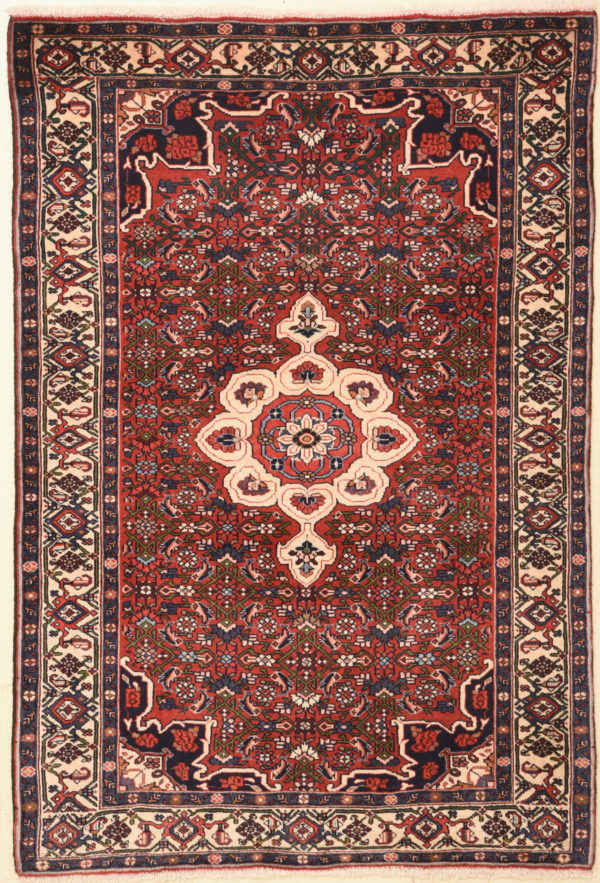
The herati motif is the most commonly used motif in Bijar rugs and it is used in the medallion layout as well as an all-over design.
Other motifs and allover designs used in these rugs include the boteh, gul farangi, zell-i-sultan and mina khani. The rugs generally have several minor borders decorated with motifs.
One frequently seen motif in the border is the Shah Abbasi motif.
Another common pattern used in Bijar rugs consists of multiple hexagon medallions in different colors woven inside one another and becoming larger as they got further away from the center.
Foundation and Pile of Bijar Rugs
Depending on its age, a Bijar rug may have a foundation of wool, cotton or camel hair. The pile is almost always made of wool. Weavers use high quality wool for the pile and clipped it so it was neither too short nor too long.
Weaving Techniques Used in Bijar
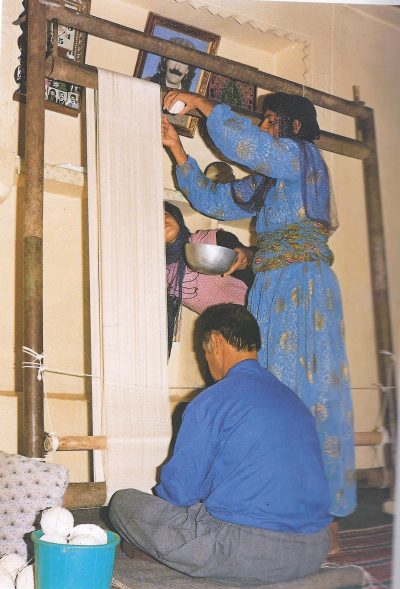
The weaving technique used to construct these rugs is different from the techniques used to make most other types of Persian rugs.
Most other Persian rugs are constructed with one weft. However, Bijar rugs are constructed using the Turkish knot and two wefts. These two wefts have different thicknesses.
Weavers first dipped the weft in water to dampen it. They then inserted it horizontally between rows and beat it down tightly using a special type of tool called a comb.
The damp weft shrinks a little as it dries out, giving the rug a firm, solid foundation. This repeated beating the weft results in the pile becoming extremely dense and compact so that it is unable to lie down. Instead, the pile stands up vertically, giving the rug a dense luxurious look and a cushioned sensation when you walk over it.
This unique construction method has made Bijar rugs one of the densest and strongest rugs in the world. Their inherent denseness and strength have earned them the nickname of Iron rugs of Persia.
Typical Sizes of Bijar Rugs
Bijars come in small sizes as well as runners however; large pieces are relatively rare.
Bijar rug sizes vary enormously, from small prayer rugs to larger room rugs and narrow long runner rugs.
How to Care for Bijar Rugs
If you own a Bijar rug one thing you must be careful about is not folding them, whether you are taking it outside for a dusting or you need to transport it. This is because the foundation is so tight, it could crack when you fold the rug. The best way to stash away or transport your Bijar rug is by rolling it lightly.
Related Categories
Traditional Rugs | Zanjan
